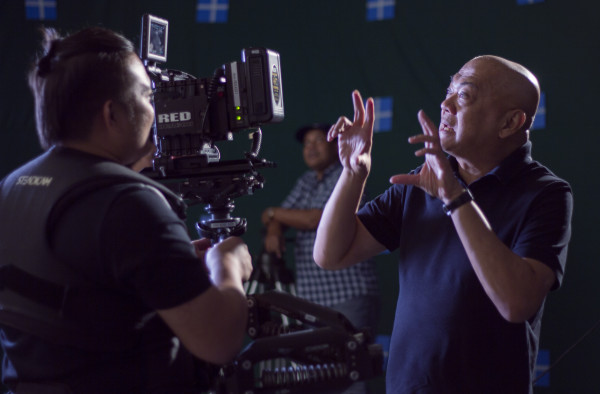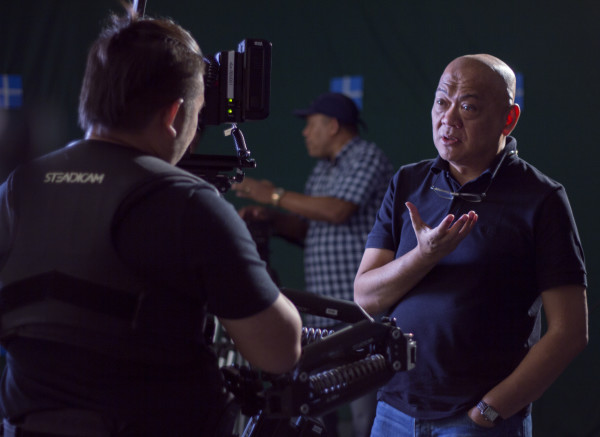PH can be Asia’s creative production hub
Passionate about emotional storytelling with cinematic visuals, two young German filmmakers, Daniel Titz and Dorian Lebherzl created a story of two brothers journeying back to their younger days. In the Scottish highlands, the setting of the ad, the two seamlessly integrated a liquor brand and put a twist to its long-time slogan at the end.
The result was a viral history and their initiative work became talk-of-the-town. By the end of 2015, the haunting speculative television commercial caught the eyes of film watchers across the globe. And influential “Advertising Age” and “Adweek” gave them a toast.
Titz and Lebherzl are film students at the Film Academy of Baden-Württemberg, Germany. They produced “Dear Brother”, title of the ad, and are hoping to someday make it big in the ad industry.
More than half of the Philippines’ 100 million Filipinos are young and creative. An equal number are also computer-savvy. Like Titz and Lebherzl, many are hoping to be given a break in television commercial production.
The Philippines has time and again proven that it can excel and be on par with the best in the world. A real film school can develop their talent and make wonders.
Article continues after this advertisementThe only thing is, we have no school like what Titz and Lebherzl attended as far as technology is concerned. Our universities are not equipped for film and TV commercial production, even in its basic form.
Article continues after this advertisementNone also has the magnitude of Miami Advertising School, one of few schools in the world that puts the student at the intersection of education and real-world practice.
Miami students learn from instructors who are practicing professionals from real advertising world, unlike some local schools with little or no knowledge of the industry and are there only because of politics or by accident.
Founded in 1993, Miami allows students to develop ideas and advertising campaigns, videos, social media strategies, websites, apps, products and new business models – all from professionals of the industry. Through partnerships with dozens of advertising agencies and film production companies, students get an opportunity to intern and get real-world experience while they are still in school.
“Imagine the good if only the best schools and teachers are available to these talented Filipinos. They can easily reach their dreams and help the country’s advertising production industry,” says Ross Misa, founder of prolific Abracadabra, a young film production company that produces better than usual TV commercials.
Misa says Filipino talents have to train in local production houses after they graduate. They have to re-learn or even unlearn some theoretical lessons, specifically those from schools with no equipment to do the rigors of real film production.
Misa founded Abracadabra in 2006 out of sheer determination to start anew after twenty-two years of working as an executive producer in a high-profile production house. The name came when his business partner Mari Buencamino were playing music on his laptop.
While they were at it, a Steve Miller Band song popped out. Dissecting the lyrics “Father, Son, Holy Spirit” and “We create as we speak”, they would be convinced that the word was fun and catchy. They then set up a one-room office space in Roadrunner, a production house owned by veteran Dodie Lucas in Legaspi Village, Makati. The rest is history.
“Our growing up years were luckily, not as tough as those of other players in the industry. We were fortunate enough to have a pool of clients who supported us. This inspired us and we became even more aggressive in chasing for new directors to offer to our growing number of clients,” Misa recalls.
He immediately put Italian Director Franco Marinelli on board. Marinelli was a most sought after TV commercial director who also gave Abracadabra its first regional TVJ commercial production assignment.
Abracadabra debuted with an Anchor Beer tv commercial shot in China, in collaboration with ad agency Leo Burnett Guangzhou. They then worked on Qatar Fertilizer, in partnership with Spinifex Australia, afterwhich they produced three more tv ads for Walmart USA, all directed by Marinelli.
Over the years, Abracadabra would win gold awards from the local industry’s Oscars: Ad Congress, Kidlat Awards and in regional and international award shows like Spike Asia, Cannes, and One Show. It even made a full-length movie entry for Sundance Film Festival.
As it was becoming a hot innovative shop, it also meant investing in new equipment and technology. Abracadabra subscribed to the latest Steadicam series to meet the needs of the local film and video industry.
Recently, it rounded up progressive Philippine directors, camera operators and producers to attend a Steadicam Bronze Workshop, in partnership with Big Brother Manila and Tiffen Steadicam, a global leader in film equipment supplies to address cost-efficiency in the new digital age and other challenging issues affecting the industry. The company also allied with the country’s biggest supplier of state-of-the-art equipment, HD cameras and Final Cut Pro editing facilities.

The company will celebrate its 10th year on July 27th this year. It is just as upbeat as when it started even with a number of production houses have closed down and old-timers in the industry have retired.
Misa has no traces of slowing down. On the contrary, he continues to give something back, sharing part of Abracadabra to talented Filipino filmmakers by providing them valuable training ground they never experienced early on.
The next 10 years
The ever forward-looking Misa has taken note of the evolving episodes in the industry. His plans are ambitious. “We all have to become lean and mean but very smart in the way we approach production,” he says. He believes that it is in the giving that “we receive. It is always the law of seedtime and harvest,” he says.
It is heartening to listen to someone with a vision that has something to do with helping a thriving creative industry and helping our economy. That is Ross Misa. “I simply want to sustain and continue our services. I want to see Abracadabra become one of the best, if not the best ever creative communications company in the Philippines and in the Asia-Pacific region,” Misa says on being asked how he wants to see his baby in the next ten years.
Misa is not talking empty. He is tireless, forward looking and surrounded by supporters, people with diverse experience, creative and industry people who are experts in traditional and emerging new media.
He has long been ready even before the digitalization game became a buzzword. He has mapped out plans to face the competition. “Our first and foremost rule: “Adapt to the changing times and master the art of sustainability,” he says matter-of-factly.
Misa started in TV commercial production when he was accompanying his younger sister for a production assistant interview in a production house called Media Circuit in Quezon City. The frenetic scene, his own curiosity and excitement tempted him to also try. He, too, applied and got hired.
“My first teacher in the industry was no less than Lorna Lopez-Tabuena, the owner and two other pillars of the company, Yayan Concepcion and Ina Lagman. I was trained to do all types of legwork: answer the phone, make copies of storyboards, run errands (food for shoots and interlock meetings, prepare artwork and set materials) and do all kinds of administrative tasks my production managers asked me to do,” he remembers.
His training also involved technical matters. He was lucky to be able to work with Nelly Vidanes (Mang Nelly to many), Media Circuit’s technical supervisor for TV network engineering.
He eventually became a Production Manager and worked with some of the best Filipino and foreign directors like Jin Urbano, Naning Padilla, Tony Herrera, Tony Smith, Jeric Soriano, Trevor Hone, Butch Perez, Dante Datu, Vitt Romero, Manolo Abaya, Peque Gallaga, Lorie Reyes, Stasch Radwanski, Franco Marinelli and Neil McDonald.
He remembers with fondness the TV commercials he produced during the early part of his career: Smart TV commercial with Dolphy as talent and produced by one of his mentors in the industry Nanette Ramirez, “Riles”, an advocacy ad for TBWA-Santiago, Mangada and Puno, “Dancing Inmates”, a tribute to Michael Jackson that was co-produced with Sony Pictures USA and the first Jollibee TV ad produced with the late Abby Jimenez.
He, too knocked on doors of advertising agencies, collaborated with in-house agency producers and presented demo reels of Filipino directors and cinematographers, selling his company’s production expertise and experience.
His biggest break came with “Wok With Yan”, a grueling series of TV commercials created for three ad agencies in one day, a project he considered a turning point in his career.
“I had to shoot three concepts within 24 hours.
Here, I learned attention to detail, a “get-it- done” attitude, which I inherited from my boss, coupled with a good relationship with production setmen, otherwise, you’ll never what will happen. Here, we were supposed to simulate the show’s template, follow directions correctly and must deliver based on pre-production meeting agreements. We hurdled the test!” he proudly remembers.
How was the industry back then compared to now? “Ad agencies then demanded quality. Everything had to pass through rigid process and schedules were more reasonable. Production budgets were much higher. There was more leeway for us to use big-named local and foreign directors. Graphics and post-production facilities were mostly done overseas: Tokyo Japan, Hongkong, Sydney Australia, Los Angeles, USA, and Bangkok,” he says.
He laments that social media has changed the scenario and real-time media has become prevalent. “There are now more affordable technology (cameras and post facilities) and user-friendly applications/softwares that enhance executions and they have become readily available. We see these not as a threat but as tools for real talented Filipino artists,” he says.
People in the industry come and go but Misa has crossed over changing landscapes. What makes it so? “I would like to think that it is because of my passion to do my craft well and my willingness to reinvent myself,” he says.
For Misa, life is a constant learning journey. All these years, he has learned the value of team effort, a mantra that has become his principle in life. “I’ve learned to delegate and enjoy the contribution of each player in my organization,” he professes.
How did he endear himself to a very critical industry? “I love my job and enjoy every minute of it with undying passion. I give back by doing personalized service in many ways than one. In the days that my former company did not invest much in technology and equipment, I developed a strategy unique to me,” he says.
Looking forward
According to Misa, everybody has become a filmmaker with the rise of social media. One can create any form of communication and be seen on mobile phones and other media of the Internet. Competition in tv production industry has become stiffer. Viewership has changed. Users of TV, cable, and whatever satellite distribution, there is, have declined with the exception of news coverage, sports and live events.
People are now watching content on the mobile phones, laptops or ipads. Because of the openness of the system and the free platform that it gives, more and more competitors have become players in content creation – resulting in production budgets that have become thinner and thinner.
What would he advise students of mass communications and juniors in the profession to be successful in the industry?
As in any other field of endeavor, Misa advises like a true master: “One must just follow his heart. Practice makes perfect. Be ready for a more or less 24/7 scenario. Read as much as you can to get updated. Keep your mind open to new ideas. Learn the art of saying No. Think ten times ahead of your clients. Lastly, make things happen.”

